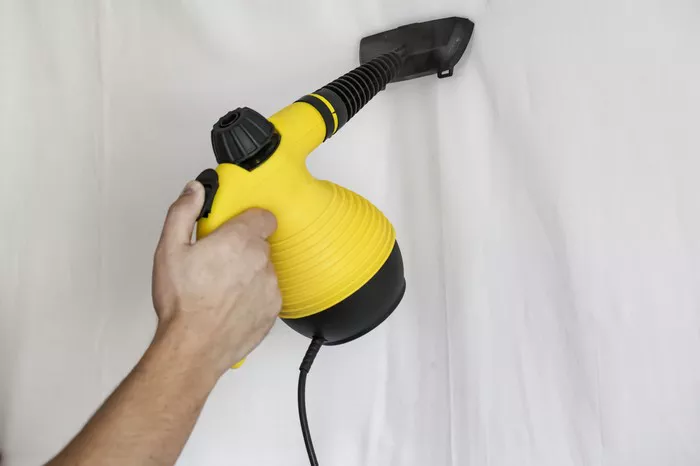Steam cleaning walls is an efficient and effective method for maintaining a clean and hygienic environment in your home or workspace. Utilizing the power of steam, this cleaning technique not only removes dirt, grime, and stains but also eliminates bacteria and allergens without the need for harsh chemicals. In this comprehensive guide, we will explore the benefits of steam cleaning walls, address common concerns, provide a detailed cleaning process, offer safety tips, and discuss post-cleaning care and troubleshooting techniques.
Benefits of Steam Cleaning Walls
The benefits of steam cleaning walls are manifold. Firstly, it provides a deep and thorough clean, penetrating porous surfaces such as paint, wallpaper, or tiles to lift away embedded dirt and stains. Unlike traditional cleaning methods, steam cleaning does not leave behind residue or chemical odors, making it ideal for households with pets, children, or individuals sensitive to harsh cleaning agents. Moreover, steam effectively sanitizes surfaces by killing bacteria, germs, and dust mites, contributing to a healthier indoor environment.
Addressing Common Concerns
One common concern regarding steam cleaning walls is the potential for damage to paint or wallpaper. However, when performed correctly, steam cleaning is safe for most wall surfaces. It is essential to use the appropriate steam cleaner settings and avoid prolonged exposure to sensitive areas. Additionally, conducting a spot test in an inconspicuous area can help determine the compatibility of the paint or wallpaper with steam cleaning.
Equipment Needed
To steam clean walls effectively, you will need a steam cleaner specifically designed for household use. There are various types available, including handheld steam cleaners, cylinder steam cleaners, and steam mops. Each type offers different features and functionalities, so it is essential to choose one that suits your needs and preferences. Additionally, consider investing in additional attachments such as a detail nozzle or brush for targeting tough stains and crevices.
Preparation Steps
Before beginning the steam cleaning process, it is essential to prepare the room adequately. Remove any furniture or obstacles that may obstruct access to the walls and ensure proper ventilation by opening windows or doors. Dusting the walls beforehand with a microfiber cloth or duster will help remove surface debris and improve the effectiveness of the steam cleaning process. Finally, perform a spot test in an inconspicuous area to assess the paint’s durability and ensure compatibility with steam cleaning.
Step-by-Step Cleaning Guide
1. Fill the Steam Cleaner: Begin by filling the steam cleaner’s reservoir with water according to the manufacturer’s instructions.
2. Select Settings: Choose the appropriate steam intensity and temperature settings based on the type of surface you are cleaning.
3. Start from the Top: Start cleaning from the top of the wall, working your way down in small sections to ensure thorough coverage.
4. Use a Steady Motion: Hold the steam cleaner nozzle a few inches away from the wall surface and move it in a steady, back-and-forth motion.
5. Target Stubborn Stains: For stubborn stains or areas of heavy grime, use the steam cleaner’s detail nozzle or brush attachment to apply concentrated steam.
6. Dry and Repeat: After steam cleaning each section, use a clean, dry cloth to wipe away any moisture and residue. Repeat the process until the entire wall is clean.
Safety Tips
When using a steam cleaner, it is essential to prioritize safety to prevent accidents and injuries. Here are some safety tips to keep in mind:
1. Protective Gear: Wear protective gloves and eyewear to shield yourself from hot steam and potential splashes.
2. Electrical Outlets: Avoid spraying steam directly into electrical outlets or switches to prevent the risk of electrical shock.
3. Children and Pets: Keep children and pets away from the cleaning area to avoid accidental burns or injuries.
Post-Cleaning Care
After steam cleaning walls, it is essential to maintain their cleanliness to prolong the results and prevent the buildup of dirt and grime. Regular dusting with a microfiber cloth or duster will help remove surface debris and keep walls looking fresh. Depending on the level of activity and environmental factors, consider steam cleaning walls every few months to maintain optimal cleanliness and hygiene.
Troubleshooting Common Issues
Despite taking precautions, you may encounter common issues during the steam cleaning process. Here are some troubleshooting tips:
1. Streaking: If streaks appear after steam cleaning, use a clean, dry cloth to buff the surface gently.
2. Paint Peeling: If paint begins to peel during steam cleaning, stop immediately and assess the situation. It may indicate that the paint is not compatible with steam cleaning, or the steam intensity is too high. Consider alternative cleaning methods or consult a professional for advice.
Latest Data and Trends
Recent advancements in steam cleaning technology have focused on enhancing efficiency, convenience, and eco-friendliness. Manufacturers have introduced features such as adjustable steam settings, ergonomic designs, and eco-friendly cleaning solutions to meet consumer demand for sustainable cleaning options. Additionally, there is a growing trend towards chemical-free cleaning alternatives, utilizing the power of steam to sanitize and disinfect surfaces without the need for harsh chemicals or detergents.
Conclusion
In conclusion, steam cleaning walls offers a safe, effective, and environmentally friendly solution for maintaining clean and hygienic living spaces. By following the guidelines outlined in this article, you can achieve professional-quality results while minimizing the risk of damage or injury. With proper preparation, equipment, and technique, steam cleaning walls can become a valuable addition to your cleaning routine, ensuring a healthier and more comfortable environment for you and your loved ones.

